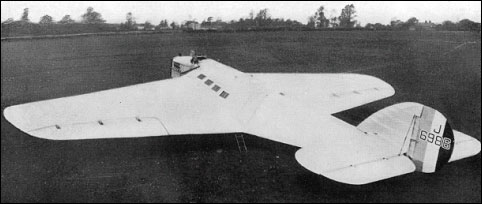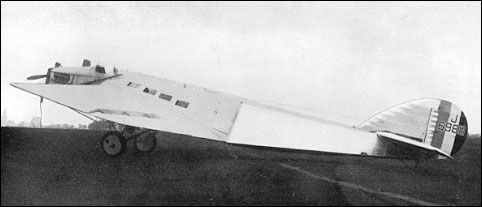 |
Westland Dreadnought1923 |  |
| Virtual Aircraft Museum / United Kingdom / Westland | |
 |
One result of the First World War was to speed up the development of aeroplanes, and with the coming of peace every effort was made to divert this warlike energy to more beneficial purpose, the guiding hand in this direction being the Air Ministry's Directorate of Technical Development. For some time the Directorate had been interested in the theories of a Russian inventor, M.Woyevodsky, whose idea of the perfect aeroplane was that the fuselage and wings should be in the form of a continuous aerofoil, with external wing bracing eliminated, rather like the modern conception of the "flying wing." Several Woyevodsky models were tested in wind-channels and, when the results seemed to confirm the inventor's claims, the final model was handed over to the Westland design staff to be put into practical form. This rather idealistic model was of a twin-engined freight-carrying monoplane of 21.1m span and a length of 17.08m, with a wing area of 78.04m2. A retractable undercarriage was also a feature of the model design. However, theory and practice did not exactly coincide, and the single 450hp Napier Lion engine. Apart from these points the original model design was translated into an all-metal monoplane of distinctly futuristic appearance. Construction methods employed were also ahead of the times, use being made of drawn metal channelling and corrugated metal panels, much in the style of the modern "stressed skin" method of manufacture. The Dreadnought was completed in the spring of 1923, and its taxying trials attracted considerable local interest. Captain Keep conducted these tests, often accompanied by Mr. Bruce, and had the machine satisfactorily airborne for a few yards in short hopping flights. Everything pointed to the success of this unique design, but the initial test flight, which took place on an afternoon in early May, 1923, ended in disaster. After a seemingly smooth take-off the Dreadnought rose steadily towards the aerodrome boundary, but near the factory buildings it was apparent Captain Keep was having difficulty in controlling the machine. Shortly after this the Dreadnought stalled and crashed from a height of about one hundred feet, the engine and wings striking the ground squarely and the fuselage breaking off at the cockpit. Captain Keep was seriously injured and had to have both his legs amputated, but this major personal misfortune did not lessen his interest or work in aviation, and he has since added many years of technical and advisory service to his career. The Dreadnought design was abandoned from this point, but more recent experiments on similar lines have demonstrated that it was a step in the right direction, although an unlucky one. A.H.Lukins "The Book of Westland Aircraft", 1943
|  COMPANY PROFILE | |||||||||||||||||||||||||
 |

|


